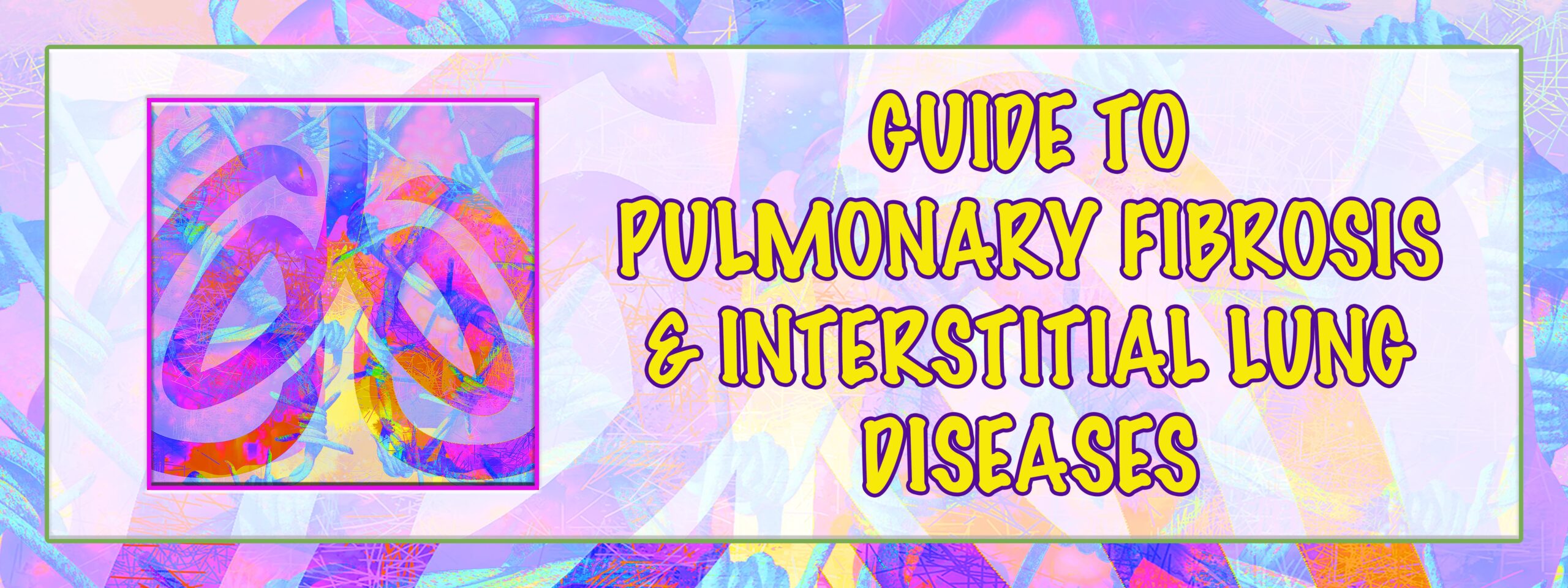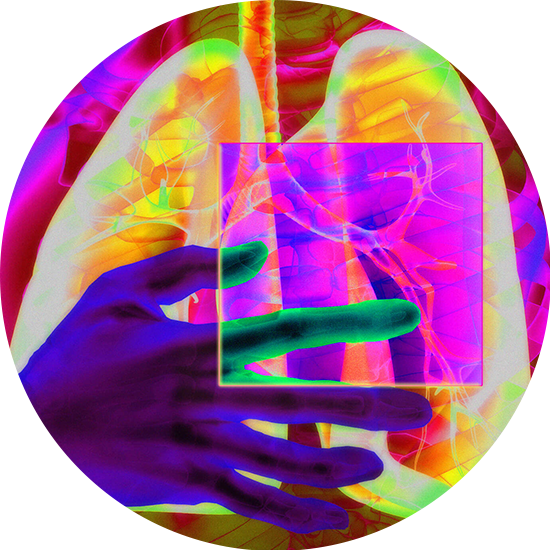
Introduction
If you are reading this book, there is a pretty good chance that you or a loved one have been given a diagnosis of Pulmonary Fibrosis (PF), Idiopathic Pulmonary Fibrosis (IPF) or Interstitial Lung Disease (ILD). As if the words themselves aren’t complex and scary enough, you are likely left with many feelings and questions about what this means and how a chronic lung disease will affect your health and the rest of your life moving forward. The authors intimately understand this experience completely because at one time or another, we’ve all been there as we are all pulmonary fibrosis patients ourselves.
As fellow patients and one rehabilitation specialist in a pear tree, our mission in writing this book is to share information with you that has collectively taken us decades of research, clinical practice and firsthand experience to acquire in the hope of helping you avoid some of the same challenges and pitfalls that we, ourselves have experienced and that we wish someone had been there to tell us when we were first starting out on this rollercoaster that nobody asks to be on.
Note: This book is not a medical book. Rather, it is more of a practical field guide, based on the experiences of a diverse group of people living with PF, IPF or some other form of ILD and one rehabilitation specialist in a pear tree. In sharing our experiences with you, we hope to provide you with our best personal advice on how to continue living your life, despite a difficult disease. And while not all things will be effective for all people; we ultimately hope to help make your life easier, less stressful, and more enjoyable.
About Us
Before we get down into the weeds or the nitty gritty, we wanted to introduce ourselves and share our own stories with you, so that you can have a better understanding of who we are, where we are coming from, and know that we stand alongside you in solidarity.
Ann
Hello. I am Ann. I am 77 years old, and I have an extensive family network that works together to offer me support in my journey. I live in a small, comfortable neighborhood with neighbors that also keep an eye out for me. I have been a very active person all my life. I was a member of two alumni groups, volunteered for the Salvation Army, and socialized regularly with friends. I also regularly drove 13 hours to visit my grandkids in South Florida.
I had initially begun experiencing increased difficulty with shortness of breath, especially when walking, and one day, I had trouble walking from a luncheon in a large building back to my car. Then it was walking a block with my friends while trying to talk. It was at that point that I knew it was time to go to the doctor.
After visiting my primary care doctor, I was sent to a pulmonologist at a large medical center that had a Center of Excellence (COE) for pulmonary diseases. Having worked with this group on research studies, I knew the doctors and staff. It didn’t take long to realize that I was in trouble. After multiple tests, specialty doctor visits, and a lung biopsy, the ILD team decided I had IPF and that I needed supplemental oxygen. The delivery of the diagnosis was not handled well at all. My 21-year-old grandson was with me at the time and the doctor basically said: “you have IPF, which means you have 2 to 5 years to live.” We were both in complete shock and I am quite sure that neither of us heard much of anything after that. This was not a very good way to deliver any diagnosis, especially one like IPF. When delivering such news, your doctor should set aside time to explain your diagnosis, available treatment options and prognosis; and for you to be able to ask questions as you begin to process this information.
I know so much more and am so much better prepared to handle this diagnosis now than I was then. My family is still very protective but supportive of me continuing to make my own decisions and live independently. The Covid-19 pandemic has decreased my activity level dramatically, but with the help of Zoom and various online support groups, I have reinvented myself and a created a new, comfortable lifestyle. And yes, I do realize how lucky I am.
Charlene
My IPF journey began in the Spring of 2016 with the sentence: “Charlene, we’re sending you to the emergency department.” At the time, I had been dealing with a dry cough, breathlessness, and fatigue for nearly nine months. It would be another five months before I was properly diagnosed. Despite these unusual symptoms, I never suspected I’d have a life-threatening lung disease at twenty-eight years old.
I was working in a hospital at the time; an environment that was very conducive to catching infections. I worked long hours and had repeat interactions with patients who were often very sick, and my evenings and weekends were filled with social activities and events; all given top priority over rest, sleep, and self-care.
As a result, the physicians I saw about my symptoms seemed unconcerned. After all, I did have age on my side and no underlying health conditions, so it was unlikely that it was anything serious. That changed dramatically in April 2016 when I was diagnosed with IPF.
It took thirteen months to confirm my IPF diagnosis and sadly, based on what I know about other patients’ experiences, that isn’t unusual. Throughout those thirteen months, the physicians suspected I had everything from adult-onset asthma to chronic bronchitis, to pneumonia, to any one of many various viral or bacterial infections. The symptoms of each of these mirrored how I felt, but the medications typically used to treat those various illnesses were not very effective for me and very soon after finishing a prescribed course of inhalers, steroids, or antibiotics, my breathlessness would return, and the doctors would reconvene.
Like most, I had never heard of IPF, so despite thirteen months of progressively worsening symptoms, I never suspected that I had anything seriously wrong with my lungs. The diagnosing physician (who is no longer responsible for my respiratory care), and I went through numerous potential causes of my PF; household exposures, environmental toxins, recreational activities, second-hand smoke, and genetics, among others, and there was still no glaring reason that could explain my lung damage. Five years later, I still don’t have an answer as to why I ended up with IPF and in fact, the word idiopathic means exactly that; of unknown cause or origin.
Grace
I think about my IPF diagnosis in two separate stages. The first stage was in 2006; yes, fifteen years ago. I had been unable to shake a chill and had developed a persistent cough that would not clear up despite various medical treatments. I attended a nearby respiratory hospital where I underwent chest X-rays, CT scans and pulmonary function tests. After some deliberation, the consultant there advised me that I was demonstrating signs and symptoms of IPF, which was a chronic, progressive illness; and that no pharmaceutical cure was available.
He suggested that it may be useful to consider long term antibiotics and steroid medication as a preventative measure. I was 65 at the time and had recently retired from my holistic dental practice. I had plans in place to start a new career in permaculture, travel, and spend more time with my new grandchildren, so the “prophylactic approach” did not make much sense to me, not even when the prognostic figures painted that scary picture that I would probably die in 3-5 years.
I just couldn’t find the evidence that the suggested that medication would aid in my health or my quality of life. I’d like to say that this was a well-thought-out decision-making process, but in fact, it was my own form of denying both the diagnosis and prognosis, combined with my desire for a healthy a lifestyle. But as you can tell, I am still here.
Approximately five years after my initial diagnosis, I had convinced myself (and possibly even the medical consultant) that the original diagnosis could be wrong. Unfortunately, after rechecking his data, he did confirm that the original diagnosis was correct. Overall, I was ignoring the fact that I was living a life that I knew was going to be short but continued doing what I wanted to do and what I had planned to do. Those plans included travelling several times each year to Catalonia and working at an altitude of around 3,500 feet. So far, so good.
The second stage that I refer to didn’t begin until several years later. I was working in Catalonia and discovered a reduced ability to walk up the hillside without being short of breath. I was also becoming more tired than normal but despite knowing that I had IPF, colleagues, family members and I were happy to attribute this to getting older or becoming less fit. But the symptoms remained which eventually convinced me to seek another opinion.
An initial x-ray sought by my primary care doctor was quickly followed up on by the respiratory unit with high resolution CT scan and lung function tests. By this time, I was not feeling well at all. The in-person consultation that followed had the new consultant say that I could not have IPF and that it would be advisable to have an open chest lung biopsy to clarify the diagnosis. I declined that, as I did not believe that I was well enough to cope with such a procedure. A few weeks later as I was starting to feel better, I did agree to a bronchial lavage, at which time, bronchoscopy revealed the presence of Aspergillus (a fungus), and a joint medical team definitively confirmed my diagnosis of IPF.
This second stage was also the beginning of a completely different degree of IPF for me, which was now significantly affecting my lifestyle. At this point, I had become dependent on supplemental oxygen, and it was clear that I was suffering from a progressive illness. Despite being told I had IPF twice, my story highlights the fact that PF can present in different ways for different patients.
John
I developed a severe respiratory infection in early November 2019. However, since I had already been experiencing regular bouts of chronic bronchitis for many (30+) years prior to that, I assumed that I would be able to medicate myself out of this ailment as I had done many times before. At my wife’s insistence I went to a walk-in medical clinic in Albany, NY, where the young doctor diagnosed me with pneumonia, prescribed medications, and suggested that I follow up with my general practitioner.
I didn’t have a chest X-ray as my visit was on a weekend and naively, I assumed that things would simply get better with the prescribed medications as they had in the past. At a follow-up appointment with my general practitioner, I had a chest X-ray and was contacted two days later informing me that he did not see any evidence of pneumonia, but that he was concerned about the amount of scar tissue in my lungs on the chest X-ray.
My general practitioner referred me to a pulmonologist who I saw in mid-December 2019. They scheduled sleep studies, blood tests, and a CT-scan and I was initially diagnosed with ILD in late January 2020. I had two pulmonary function tests about seven weeks apart and after the second test, I had a virtual appointment with my pulmonologist.
I had several questions about my illness which was now defined as IPF. I asked about my longevity and shared my fears about the information I had found on Dr. Google. My pulmonologist reassured me that I still had a lot more life left in me, and that I shouldn’t be so concerned.
However, while my wife and I were speaking with him, his face suddenly changed as he started to review my latest pulmonary function tests. In fact, he seemed almost panicked. He informed me that my lung function had dropped by 26% and he wanted me to start taking a medication called Esbriet as soon as possible. It took an additional seven weeks before I finally started in July 2020. I am currently tolerating the Esbriet medication very well and my team and I believe it has slowed down the progression of my IPF.
Almost immediately after being diagnosed, I joined several IPF support groups and found Noah Greenspan’s book, Ultimate Pulmonary Wellness, which I read from cover to cover. I did this research and data mining of my own volition. I’ve made my pulmonologist aware of my involvement with these groups and it was like “oh, good for you,” very nonchalant.
Folks, if there is one piece of advice I can share with you, it would be to please keep in mind that YOU are your own best advocate!
Linda
Unlike many, my initial diagnosis and care by my pulmonologist was a very positive experience. I had been having trouble breathing for several years and my pulmonary function tests were good, so they kept looking for heart issues. On one particularly hot day, my breathing suddenly became significantly worse, and I took myself to the emergency room. When I arrived, my oxygen saturation was in the low 80’s and a CT scan showed scarring in my lungs. I was immediately hospitalized for further evaluation and treatment.
The pulmonologist on call spent time explaining what might be wrong with me. She ordered tests and told me I would need a lung biopsy. Unfortunately, I had complications with the open lung biopsy, but she was able to diagnose me with Hypersensitivity Pneumonitis (another form of ILD) with fibrosis. She treated me for 3 months but when I continued to have exacerbations, she acknowledged that she had very few patients with pulmonary fibrosis and only one with HP.
She suggested I go to a center that specializes in PF and recommended I move out of the area, since my HP appeared to be related to my local environment. She gave me a referral to the Interstitial Lung Disease Center at UCLA. I had family living in the area, so I moved and enrolled as a patient at the center. They changed my medicines and began monitoring my progress. Thankfully, it has been eight years since then and the fibrosis in my lungs has not progressed.
René
I have been in good physical condition all my life. In 2014, I was on an annual ski vacation in Jackson Hole, Wyoming in the USA and found myself considerably out of breath on the slopes. And even worse, my ski buddies were all out-skiing me. I thought to myself, “Well, you are getting older, and you are high in the mountains where there is less oxygen, that’s probably it.” But in my heart, I knew that what I was experiencing was not normal.
Back home in Bonaire (Dutch Caribbean), I went to my general practitioner, who sent me to a cardiologist. A stress test was done which revealed a very strong heart. A CT scan was also done, which was deemed “normal.” Further testing in 2015 and 2016 yielded the same results; but I still didn’t believe it. I was still competing in sporting events but was becoming increasingly short of breath and not performing well at all, even in shorter, less challenging events that I would have easily won in the past.
In 2017 while skiing in Bozeman, Montana; I felt a worsening shortness of breath on the slopes again. My wife took me to a local walk-in medical clinic, and they did chest x-rays and blood tests and within 45 minutes, they told me that I had an ILD. I was told to take Prednisone, continue my vacation, and when I returned home, see a pulmonologist to determine which specific form of interstitial lung disease I had. At this point, I had no idea about the seriousness of my lung disease and naively thought I would get some medicines and it would be gone. However, back home, a CT scan confirmed my ILD.
Due to limited medical facilities in Bonaire, I went to Houston, Texas and had six-weeks of every possible test to see if I had an infectious or autoimmune disease, or one of the other possible alternatives. I was poked, prodded, pinched, jabbed, and turned upside down. I was told that it looked like IPF, but there were also indications of Sarcoidosis, and only a lung biopsy could confirm either one definitively. The lung biopsy was finally done in New York City, and unfortunately my IPF diagnosis was confirmed.
It took months before I realized the seriousness and the consequences of having this relentless, terrifying disease. We then went back over the reports of the previous CT scans and found some definite “snowy white” scarring which was never picked up by my doctors, whose excuse was that “IPF is very difficult to diagnose.” I lost four years that I should have been on the anti-fibrosis medications. Sadly, this is not uncommon when dealing with a disease like IPF, which is one of our major motivators in writing this book.
Ronald
In the spring of 2017, at my annual physical exam, my family doctor spent an unusual amount of time listening to my lungs. He reported hearing a “crackling” sound. A chest X-ray followed shortly, and then a CT scan of my lungs. Shortly thereafter, my family doctor called to say that he thought I most likely had IPF, and that he wanted to refer me to a pulmonologist he knew and respected. At the time, I was 68, and had never heard of IPF before.
Even though we live in a rural area of Canada, a pulmonologist visits our local office four days a month. I must say that our first appointment was a little rough. As he scrolled down through my CT scan, he kept muttering: “oh, that’s bad,” which was far from reassuring. He thought that it was likely IPF but said I would need more tests to be sure.
During our second appointment, we discussed supplemental oxygen. When I asked him what criteria he used to determine when oxygen was needed, he answered with a patronizing comment to the effect of “doctor knows best.” That response really raised my hackles (which is very unusual for me). But I have a science background and want to understand the factors behind certain decisions, and I fully expected to have input before any decisions about my treatment were made.
But that little tiff changed everything about our relationship. I came to understand that many of his patients were quite happy to just have the doctor tell them what to do. And he understood that while I appreciated his knowledge and advice, I wanted to maintain control of decisions affecting my health. Thankfully, our relationship warmed considerably after that and now, our discussions are much more collegial, I receive copies of all my test results, and we both feel much more comfortable with each other.
One of the items we discussed was the difficulty in making a definitive diagnosis of IPF since the “honeycomb patterns” in my lungs were indistinct. We talked about the possibility of a lung biopsy but neither of us wanted that. Instead, he recommended I get a second opinion from the Toronto Lung Clinic. Each of our visits to Toronto began with a pulmonary function test and a six-minute walk test to measure how my blood oxygen level responded to exertion. They sent me to a rheumatologist as well to rule out lupus, and I had an echocardiogram to make sure there was no heart damage present.
Toronto’s conclusions were basically the same as our home pulmonologist; that this is likely IPF, which seems to be about as firm a diagnosis as you can expect. Luckily, my family doctor identified my diagnosis correctly within the first few weeks. The next six months were spent ruling out other possibilities and more definitively confirming IPF as the culprit. IPF is now a central part of my life.
Ruth
When I first started to suspect something was wrong, I had been having severe shortness of breath walking from the parking garage to my office, which was only a block away. I knew I was out of shape, but thought to myself, “this is ridiculous.” My first thought was to go to a cardiologist, since my parents had both had heart issues. After the cardiologist gave me a clean bill of heart health, I saw a pulmonologist next. During childhood, I had often experienced long and severe bouts of bronchitis but never thought much of it. Among a whole bunch of other tests, he ordered a High-Resolution CT (HRCT) scan.
I was on vacation with friends when I got a voicemail from my doctor that said: “Mrs. O’Bryan, we have gotten the results of your HRCT scan and we need to talk. It’s not an emergency but I’ll call you later.” I waited a day and a half, and finally called his office and said: “I need to talk to the doctor immediately, he’s ruining my vacation!” A short time later, I got a call back from the doctor who said: “If it looks like a duck, walks like a duck and quacks like a duck, it’s a duck. You have Pulmonary Fibrosis.”
My doctor had suspected IPF in 2012 but waited until March 2016 to order a lung biopsy to determine exactly what kind of fibrosis I had. The results in the report stated that I had Usual Interstitial Pneumonia (UIP). I had no idea what I was dealing with at the time.
Fortunately, I made the decision to go to a pulmonary doctor who practices at an ILD Center of Excellence (COE). Sadly, many people are not diagnosed (or are often misdiagnosed) until they are in the later stages of their disease. This is one of the reasons that we see it as our mission to help raise awareness and educate others about pulmonary fibrosis and other interstitial lung diseases so patients and doctors can act quickly with respect to both diagnosis and treatment.
What We’ve Learned
As you can see, each of us arrived at our respective diagnoses in different ways. The timeline varied drastically for each of us, along with the way in which we were told about our disease and the tests used to rule out other ailments before arriving at a definitive diagnosis. Suffice to say, we all wish the diagnostic journey was clearer and more consistent and hope that by sharing our experiences, we can help make the journey a little easier for our fellow patients. Please know that you are not alone. We are here for you and hope that this book will provide you with some valuable insights and information that will make your experiences smoother than ours.























